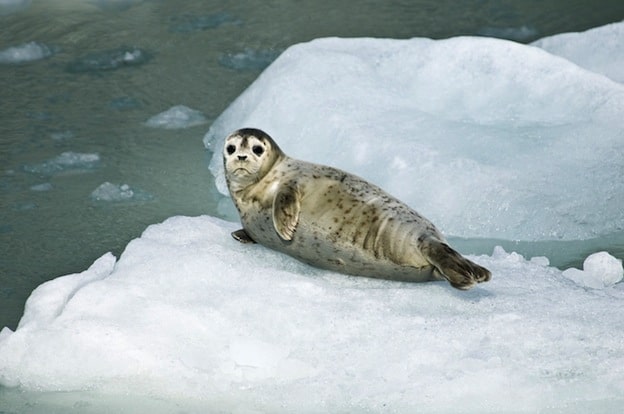Harbor Seal – Phoca vitulina
Description
The Harbor Seal is fairly small when it is compared to the many other species of seals out there. They vary significantly in color and can be dark brown, tan, or various shades of gray. The nostrils on them are a V shape which is a characteristic you won’t find with any other species of seal out there.
The males and females are very comparable in size and look so it can be hard to distinguish them. They can be up to six feet long and almost 245 pounds in weight. Each Harbor Seal has a distinct pattern of spots on its body as well. No two of them are the same.
Distribution
This species of seal loves the temperature waters. You will find them residing along the Arctic coastlines. They tend to be well spread out though because they are also in the Atlantic Ocean, Pacific Ocean, and the Baltic Sea. A small number of then has also been reported at the North Seas too.
They also like to spend their time on the rocks because it offers them a place to bask in the sun. It is also believed it helps them to stay out of the reach of various types of predators. The California coasts seem to be gaining more and more Harbor Seals than in the past. Another favorite place for them in the USA is the harbors of New York.
Diet /Feeding
The diet for the Harbor Seal mainly consists of small fish. Other food items the are commonly known to consume include Cod, Herring, Salmon, Octopus, Rockfish and Squid. Generally they will consume what happens to be the most plentiful in the area where reside.

Reproduction
The battle among males for the right to mate with the females is quite interesting. It will take place in the water and it can last for many hours. The females are only going to mate with the winners of such fights. There tends to be more females with the Harbor seals due to the brutal battles among the males. As a result these males that do win end up being able to successfully mate with a large number of the females.
The females will mate again soon after weaning of her pup. However, they won’t immediately begin the process of a new pup growing. Instead what is called delayed implantation occurs so it is about 12 weeks before the embryo will attach itself to the uterus. Then it is about 9 months until they pup is born.
The pups are very advanced when they are born, with a natural instinct to swim. They are one of the few species of seals where the pups go into the water just a couple of hours after they are born. Even though they are swimming, they don’t search for food at this time. Instead they get nutrition from the milk their mother offers for the first few months of life.
Conservation
Since it is illegal to hunt for the Harbor Seal they are well protected in their natural habitat. There are some exceptions in Canada, Norway, and the United Kingdom though. In these locations some of them can be killed to control numbers if there is a threat to the fisheries that operate in those areas.
Approximately 5 million of them are out there. Females tend to live longer than the males at a span of 30 to 35 years. The males live to be about 20 to 25 years. It seems that the numbers of them in locations such as Alaska have continued to drop but over all they are increasing.








